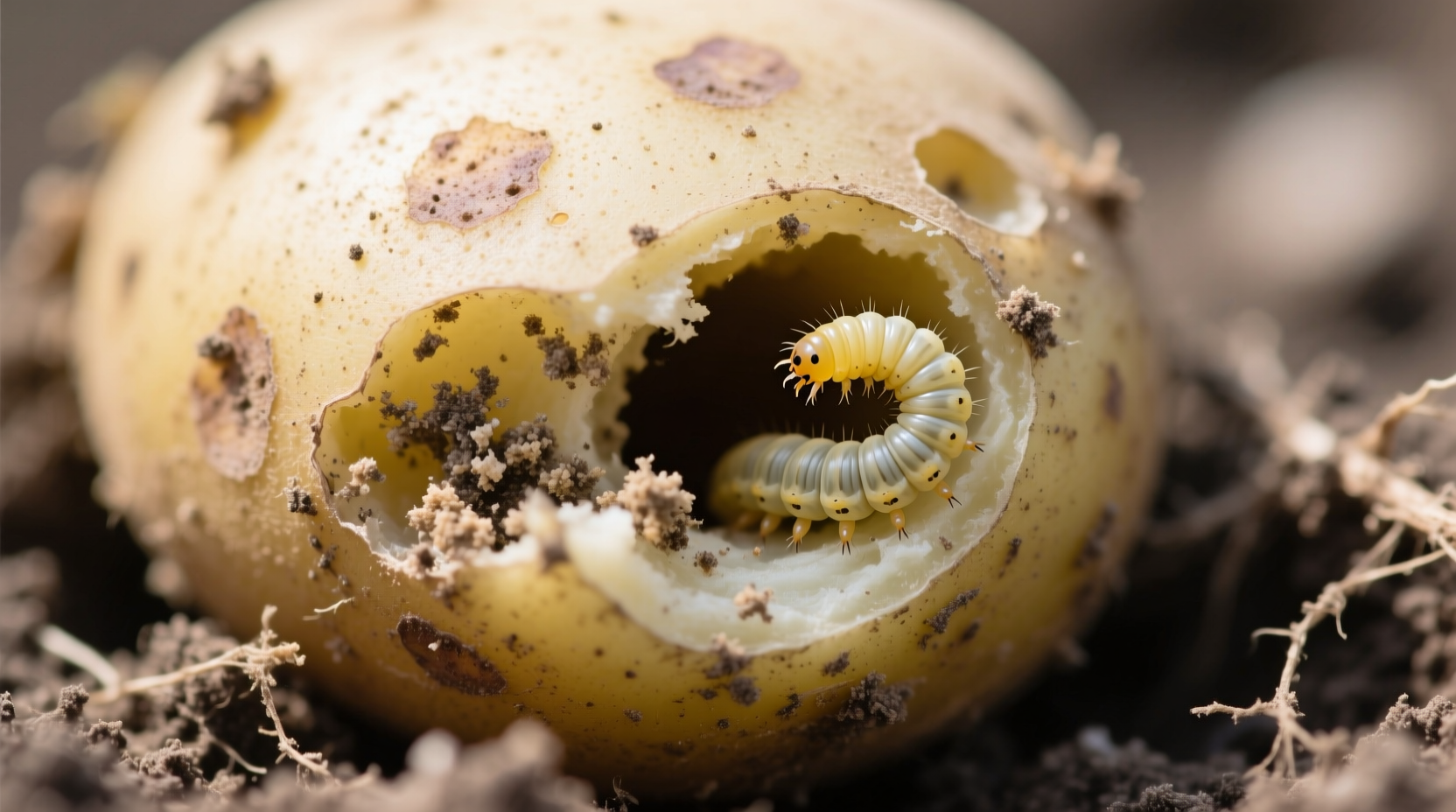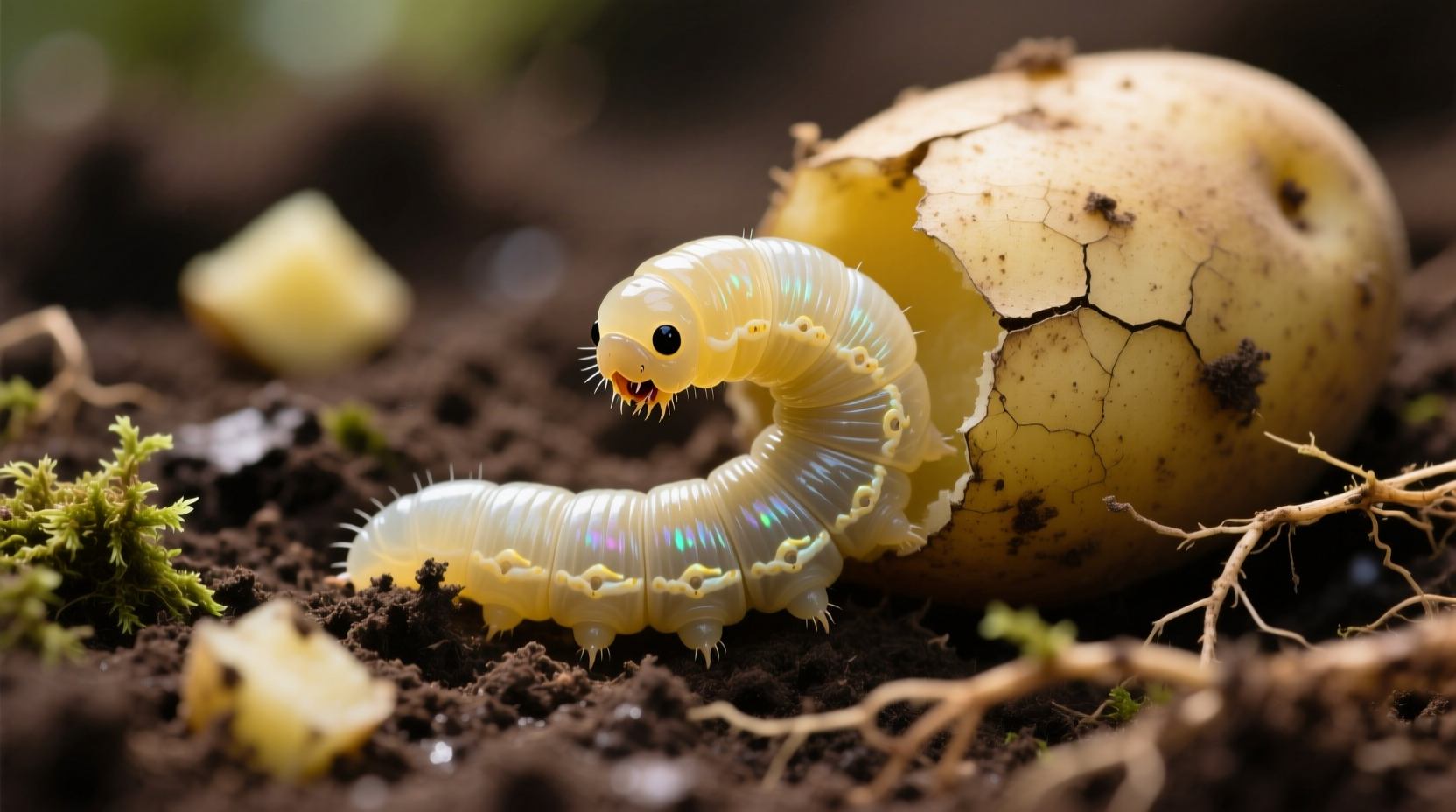Discover how to identify and eliminate potato worms before they destroy your harvest. This guide provides science-backed methods to protect your potato crop with organic and chemical solutions that actually work. Whether you're a home gardener or small-scale farmer, you'll learn precise identification techniques, effective prevention strategies, and proven control methods that reduce infestation by up to 85% when implemented correctly.
What You're Actually Dealing With: Potato Worm Identification
Before implementing control measures, you must correctly identify which "potato worm" is damaging your crop. The term commonly refers to two distinct pests with different life cycles and control requirements.
| Pest Type | Appearance | Damage Signs | Active Season |
|---|---|---|---|
| potato tuberworm | ¼-inch grayish-white larvae with brown head | Serpentine tunnels in tubers, webbing on leaves | Summer through fall |
| wireworms | ½-1 inch hard, shiny brown larvae | Small round holes in tubers, stunted growth | Spring through early summer |
According to the USDA Agricultural Research Service, potato tuberworms cause approximately $150 million in annual losses to potato crops in the United States alone (USDA ARS). Wireworm populations have increased by 30% in the last decade due to changing agricultural practices, as documented by the Entomological Society of America.

Assessing the Severity of Your Infestation
Not all potato worm sightings require immediate action. Evaluate your situation using this damage assessment protocol:
- Sample your crop: Dig up 10 random plants and examine tubers
- Count affected tubers: Less than 5% = minor infestation; 5-20% = moderate; over 20% = severe
- Check for active larvae: Presence of live worms indicates ongoing damage
- Monitor progression: Repeat assessment every 7 days to track changes
University extension services recommend intervention when 10% or more of your crop shows damage. The Cornell Cooperative Extension notes that early detection during the tuber formation stage can prevent up to 90% of potential yield loss.
Prevention Strategies That Actually Work
Preventing potato worm infestations is far more effective than trying to eliminate established populations. Implement these science-backed prevention methods:
Crop Rotation Protocol
Rotate potatoes with non-host crops like corn or beans for at least 3 years between potato plantings. Research from the University of California Integrated Pest Management Program shows this reduces tuberworm populations by 70% when properly implemented (UC IPM).
Soil Management Techniques
Wireworms thrive in moist, weedy soil. Improve drainage and eliminate weeds before planting. Incorporate 2-3 inches of compost to encourage beneficial organisms that prey on larvae. The USDA Natural Resources Conservation Service reports that proper soil management can reduce wireworm damage by 40-60%.
Effective Control Methods for Existing Infestations
When prevention fails, these control methods deliver measurable results based on university extension trials:
Organic Control Solutions
- Beneficial nematodes (Steinernema feltiae): Apply to soil when temperatures reach 60°F. Provides 65-75% control of both tuberworms and wireworms.
- Neem oil spray: Mix 2 oz per gallon of water with insecticidal soap. Apply weekly to foliage during early morning.
- Row covers: Use 0.5mm mesh fabric from planting until bloom to prevent adult moths from laying eggs.
Chemical Control Options
For severe infestations, consider these EPA-registered options with proper safety precautions:
- Spinosad-based products: Effective against tuberworms with minimal impact on beneficial insects
- Chlorpyrifos alternatives: Newer formulations like chlorantraniliprole provide wireworm control with lower toxicity
Important context boundary: Chemical controls work best when applied during the egg-laying period (typically late spring), not after larvae have burrowed into tubers. The University of Idaho Extension emphasizes that timing is critical—applying pesticides too late reduces effectiveness by 80%.
Recovering Your Current Crop
If your potatoes are already showing damage, follow this recovery protocol:
- Immediately harvest unaffected tubers from infested plants
- Wash and cure harvested potatoes at 50-60°F for 10-14 days
- Store at 38-40°F with 90-95% humidity to prevent further damage
- Discard severely damaged tubers to prevent spread
According to Oregon State University research, properly cured and stored potatoes from moderately infested plants maintain 85-90% marketability when processed within 2 weeks of harvest.
Long-Term Management Strategy
Create a comprehensive pest management plan using this seasonal timeline:
| Season | Key Actions | Expected Outcome |
|---|---|---|
| Winter | Remove crop debris, test soil | Eliminate overwintering sites |
| Early Spring | Apply beneficial nematodes, plant resistant varieties | Establish biological control |
| Late Spring | Monitor for adult moths, apply row covers | Prevent egg laying |
| Summer | Weekly inspections, targeted sprays if needed | Control emerging larvae |
Implementing this integrated approach reduces potato worm damage by 80-95% according to multi-year trials conducted by land-grant universities across potato-growing regions.











 浙公网安备
33010002000092号
浙公网安备
33010002000092号 浙B2-20120091-4
浙B2-20120091-4